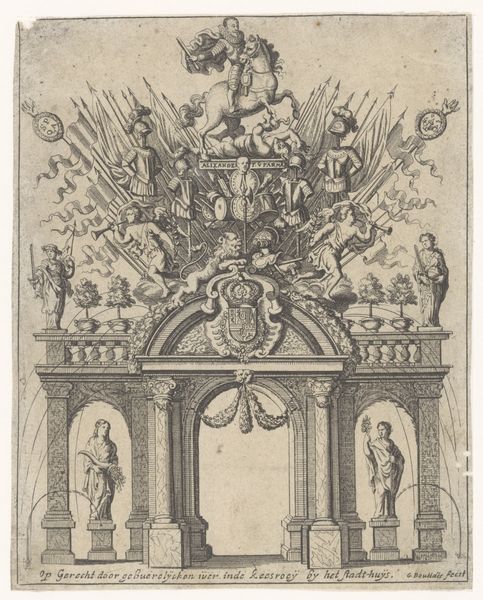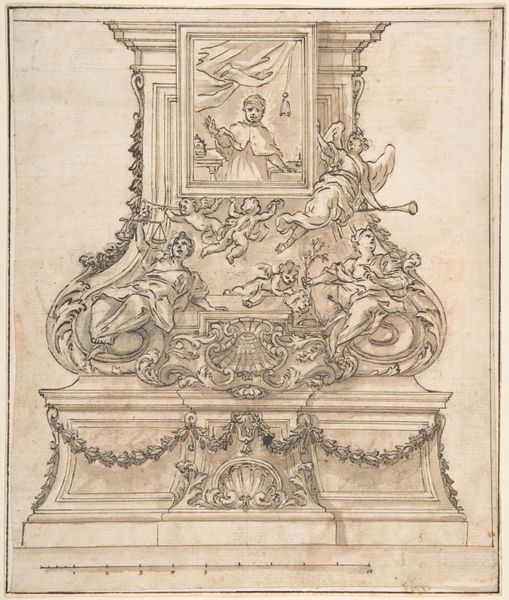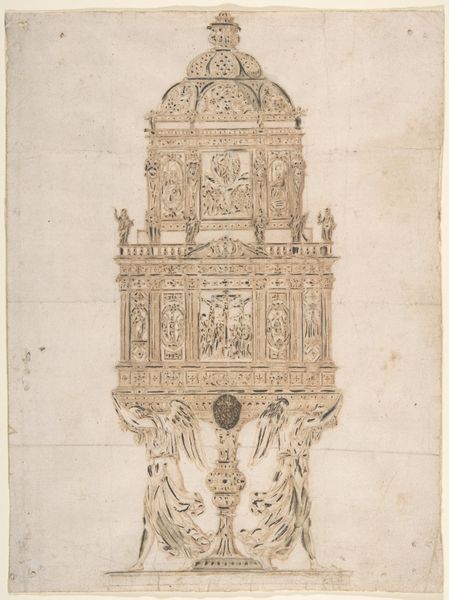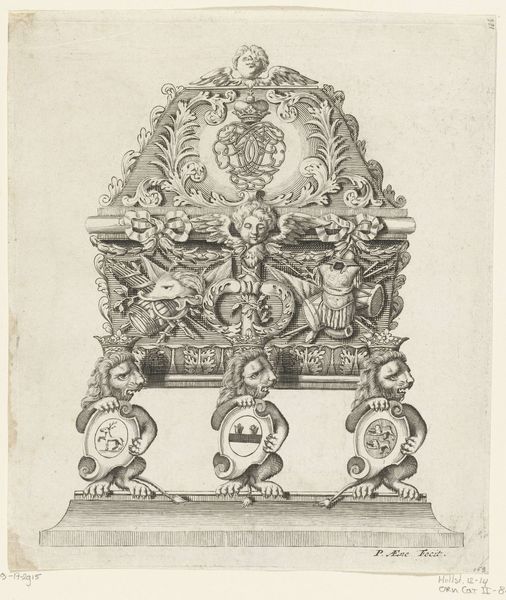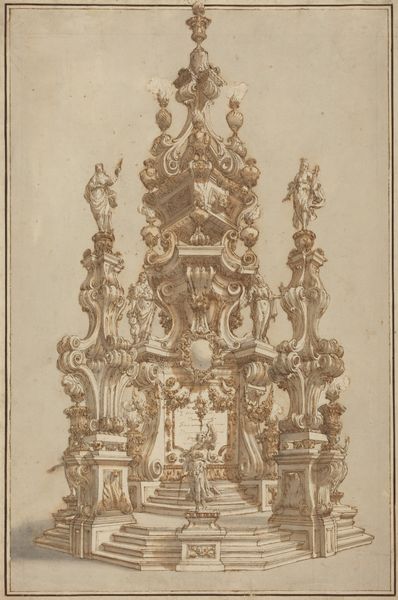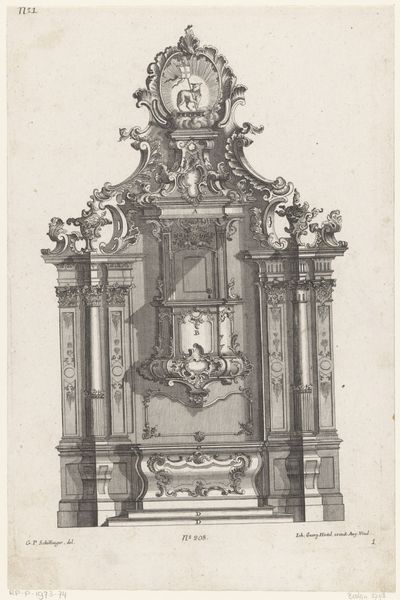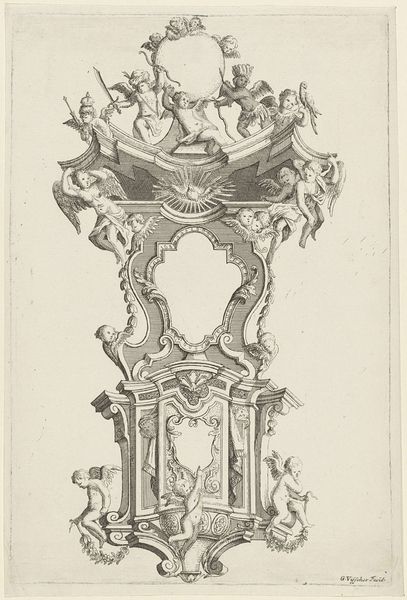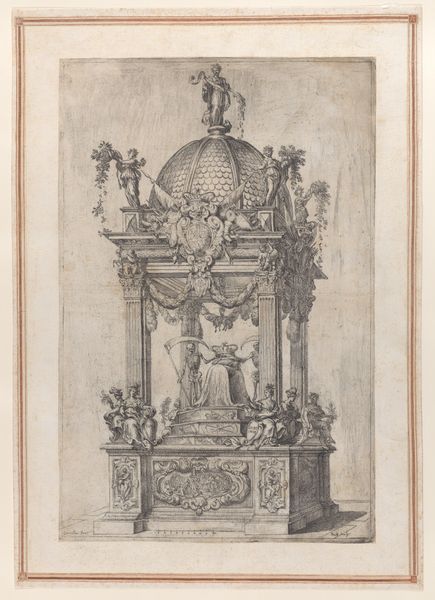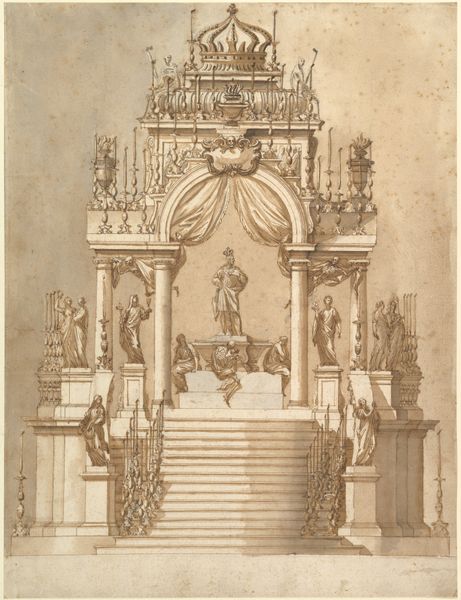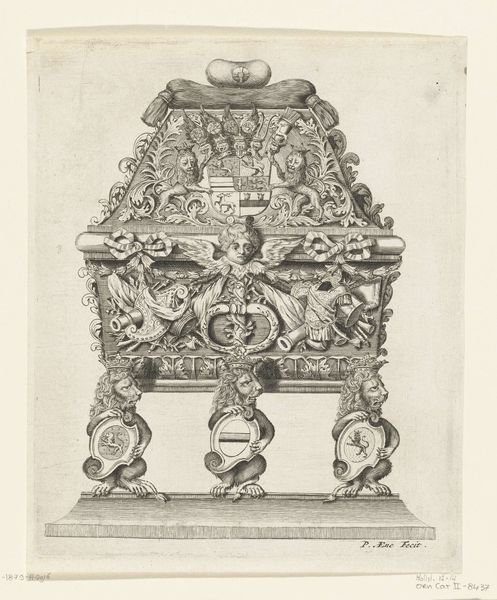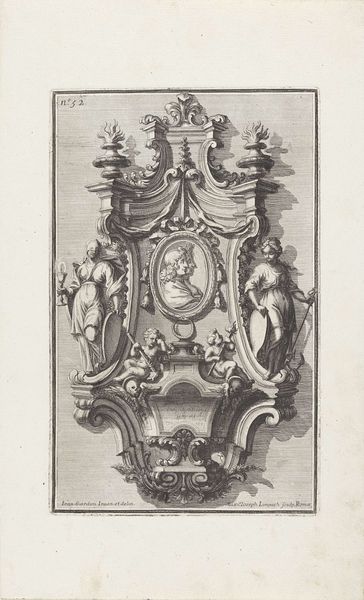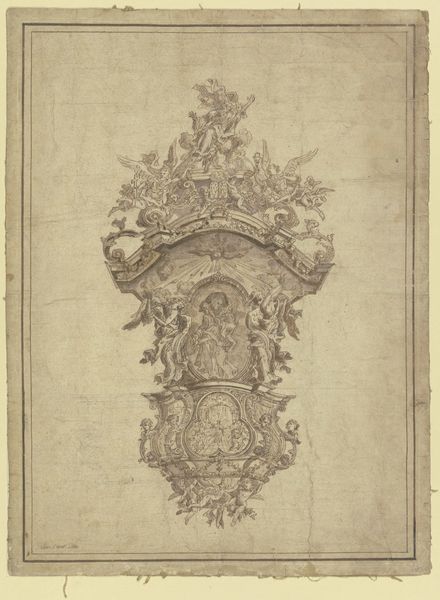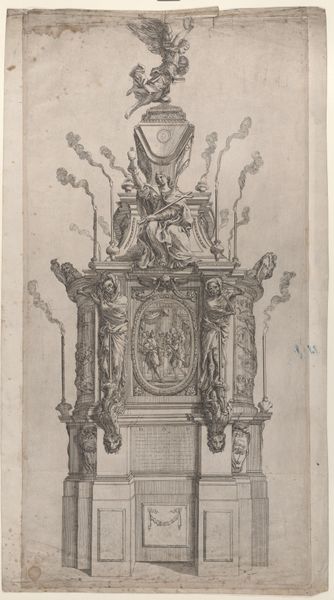
drawing, paper, ink
#
drawing
#
baroque
#
ink painting
#
figuration
#
paper
#
form
#
ink
#
coloured pencil
#
line
#
cityscape
Dimensions: 7 3/8 x 5 1/8 in. (18.8 x 13 cm)
Copyright: Public Domain
Curator: This drawing, simply titled "Fountain," dates from the Baroque period, sometime between 1600 and 1700. Though the artist is unknown, it's a remarkable example of ink on paper, currently residing here at the Met. Editor: My first impression is of architectural fantasy, almost theatrical. The intricacy of the fountain’s design is captivating; the sepia tones add a sense of age, yet the linework has a surprisingly vibrant quality. Curator: Indeed. Considering the Baroque era's penchant for dramatic expression, the fountain becomes more than a mere civic object; it’s a stage. Note the cherubic figures adorning its basins – they’re performing for an unseen audience. Editor: From a formal perspective, the artist’s command of perspective creates depth. Look at the building receding into the background; its geometric lines contrast beautifully with the organic, flowing shapes of the fountain itself. It’s all line and form. Curator: And within those contrasts lies power. Fountains during this period weren’t merely decorative. They represented access, power, and often alluded to class dynamics, especially considering urban communities of the era. Where would this fountain be located, who could have access? It implies privilege, perhaps a carefully curated spectacle for the elite. Editor: I appreciate that socio-political reading, but the symbolic element—the crowning eagle with its spread wings—also elevates the design. The whole composition seems driven to ascend vertically, striving beyond the utilitarian towards a more aspirational form. Curator: Absolutely. And perhaps within that striving, we can also acknowledge an inherent tension. The water—a source of life—is literally contained, mediated through this structure of power. Does this confinement reflect something larger about the socio-political moment? Editor: The dialogue between the architecture and ornamentation allows us a closer viewing and reading of urban space from that time, wouldn't you agree? The very style is indeed a language. Curator: A dialogue with its historical moment that prompts reflections, it seems. Editor: Exactly, thank you for guiding our thoughts.
Comments
No comments
Be the first to comment and join the conversation on the ultimate creative platform.
